Pilgrim Global buys Sable Offshore (SOC) shares worth $14.7m
Introduction & Market Context
Hexagon Purus (OL:HPUR) reported its first quarter 2025 results on May 6, showing significant revenue decline amid challenging market conditions. The clean hydrogen technology company saw its stock price fall 7.1% to NOK 1.70 following the presentation, reflecting investor concerns about the company’s near-term outlook despite strategic initiatives to right-size operations.
The company is navigating a complex market environment characterized by increased geopolitical tensions, global trade risks, and regulatory uncertainty, particularly affecting its hydrogen infrastructure business. Despite these headwinds, Hexagon Purus highlighted strong commercial momentum in transit bus applications and other segments.
Quarterly Performance Highlights
Hexagon Purus reported a substantial 44% year-over-year decline in revenue for Q1 2025, with total revenue reaching NOK 230 million compared to NOK 407 million in Q1 2024. The company’s EBITDA deteriorated to negative NOK 242 million, compared to negative NOK 97 million in the same period last year.
As shown in the following chart detailing the company’s financial performance:
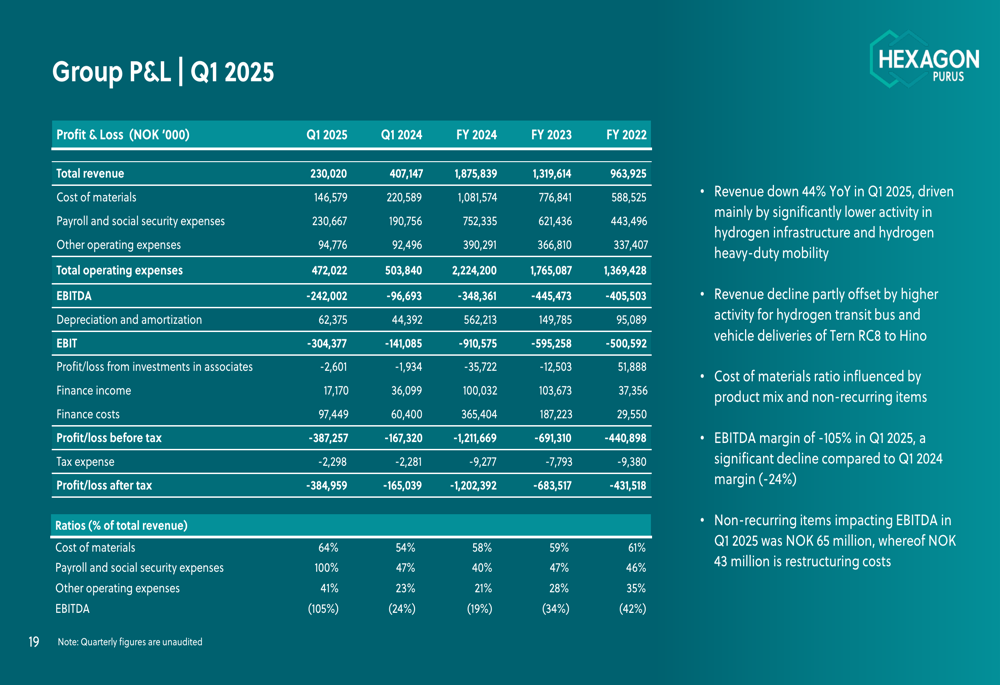
The revenue decline was primarily driven by significantly lower activity in the hydrogen infrastructure segment, which saw an 81% year-over-year decrease. This was partially offset by continued strength in hydrogen transit bus applications and vehicle deliveries of the Tern RC8 to Hino.
The following revenue bridge illustrates the sources of the revenue decline:
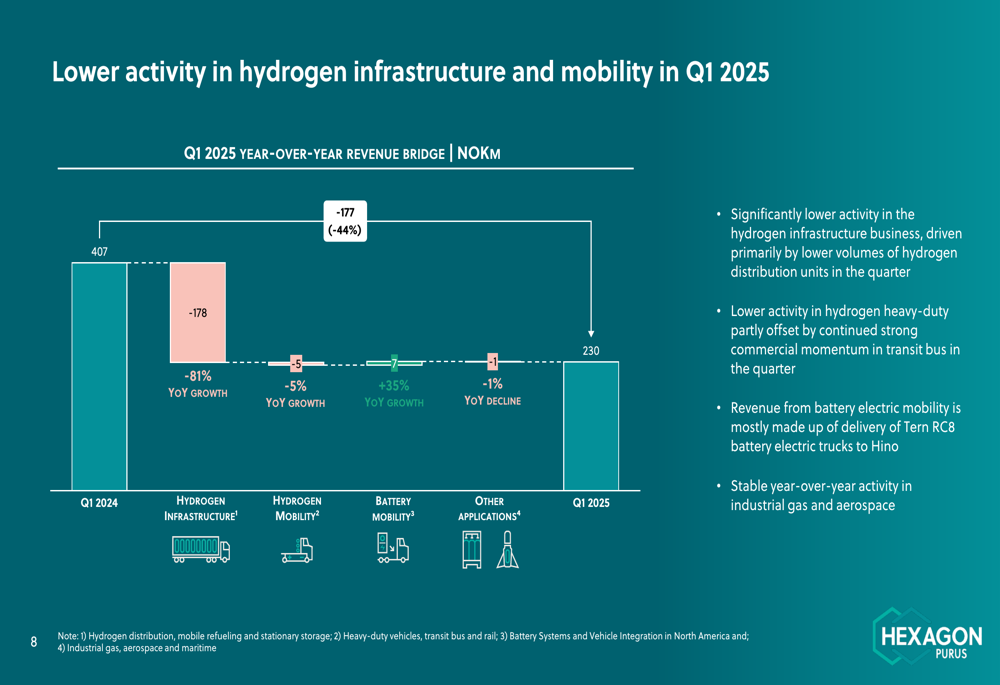
Despite the challenging quarter, Hexagon Purus reported a sequential increase in its order backlog, which grew to NOK 792 million at the end of Q1 2025, up 9% from NOK 726 million at the end of Q4 2024. The company also noted that it received additional orders of approximately NOK 200 million after the quarter ended.
The order backlog distribution shows a balanced mix across different business segments:
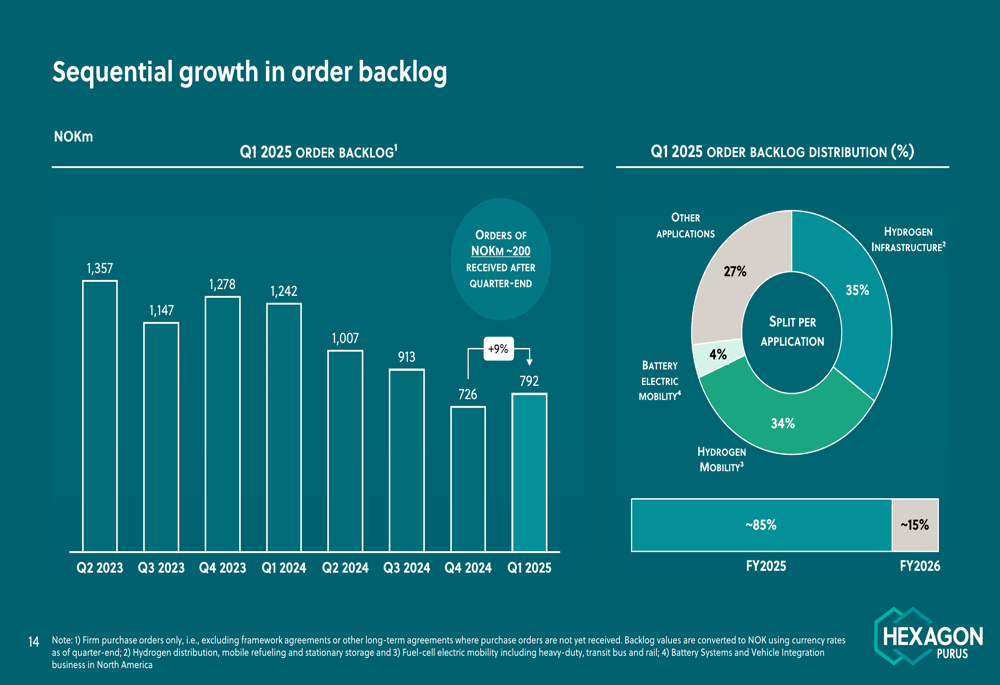
Detailed Financial Analysis
The financial results reveal a significant shift in Hexagon Purus’s revenue mix compared to the previous year. Hydrogen infrastructure’s share of revenue increased to 29% in Q1 2025 from 17% in Q1 2024, while battery mobility’s contribution decreased to 11% from 25% in the same period.
This year-over-year shift in revenue composition is illustrated in the following chart:
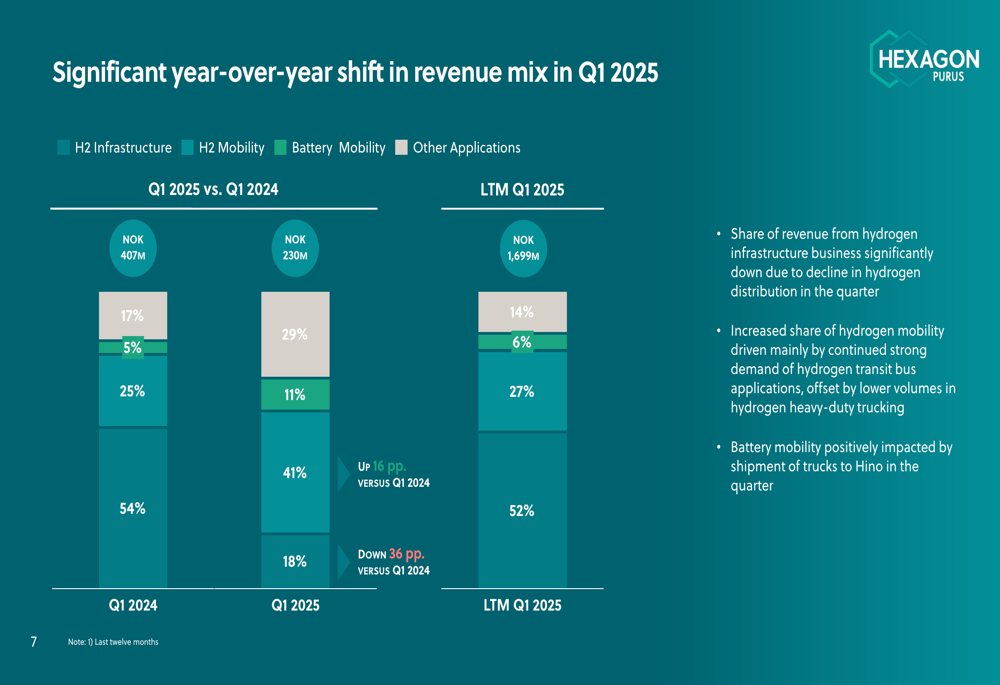
The company’s Hydrogen Mobility & Infrastructure (HMI) segment, which includes hydrogen cylinders and systems manufacturing in Europe and the US, reported a 47% year-over-year revenue decline to NOK 204 million, with EBITDA of negative NOK 143 million.
The HMI segment’s performance breakdown is shown here:
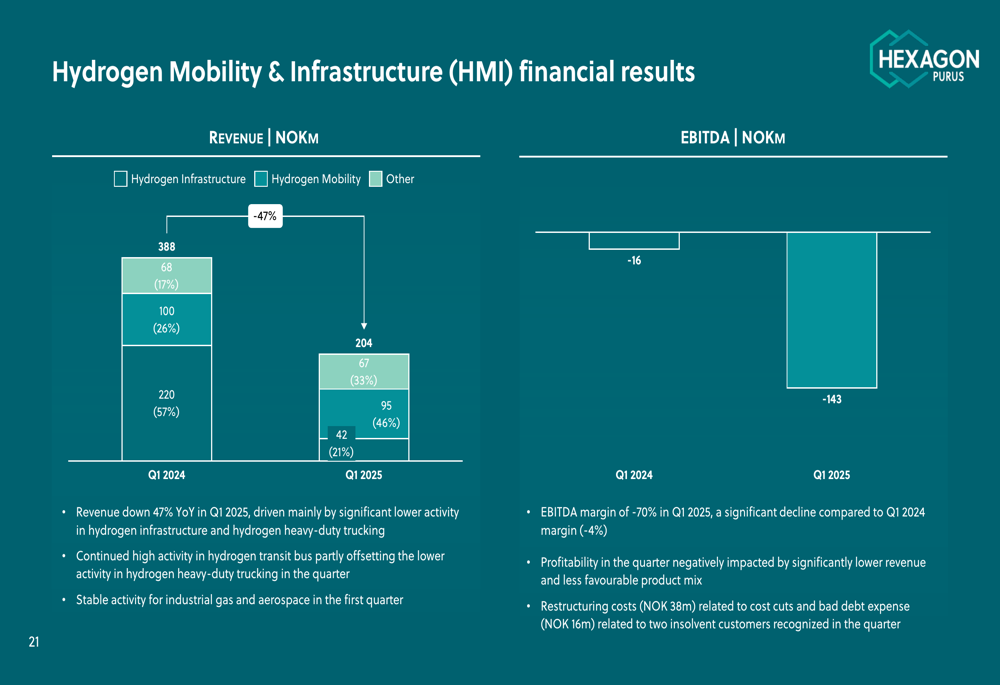
Meanwhile, the Battery Systems & Vehicle Integration (BVI) segment, which focuses on battery systems production and vehicle integration for the North American market, saw a 35% year-over-year revenue increase to NOK 25 million. However, EBITDA for this segment worsened to negative NOK 54 million from negative NOK 25 million in Q1 2024.
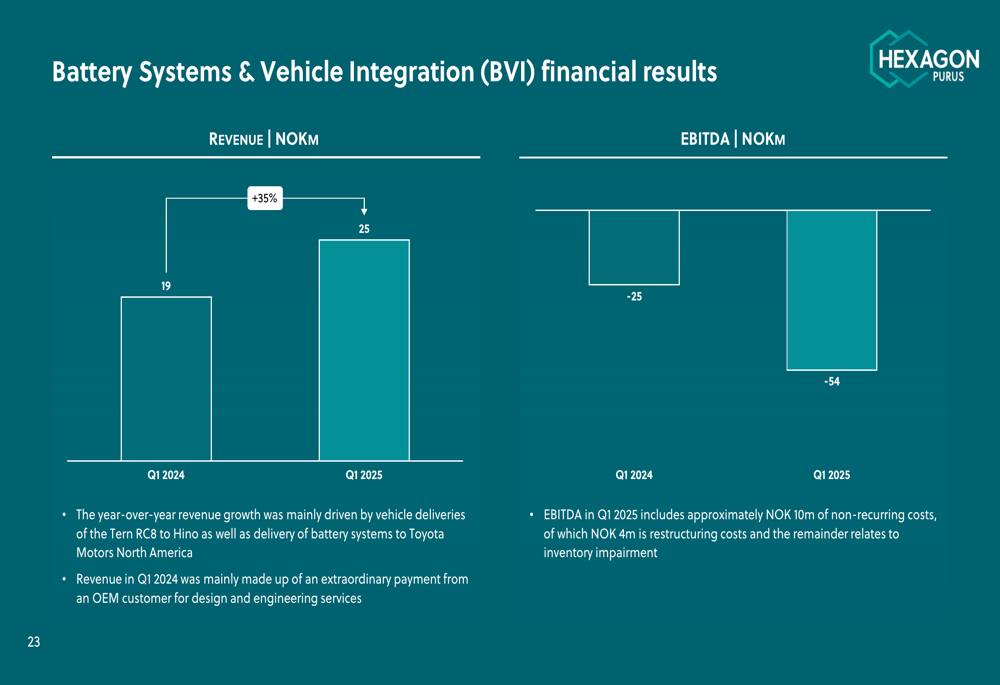
The company’s balance sheet showed total assets of NOK 4,503 million and total equity of NOK 1,676 million at the end of Q1 2025. Cash stood at NOK 794 million, providing runway as the company works toward profitability.
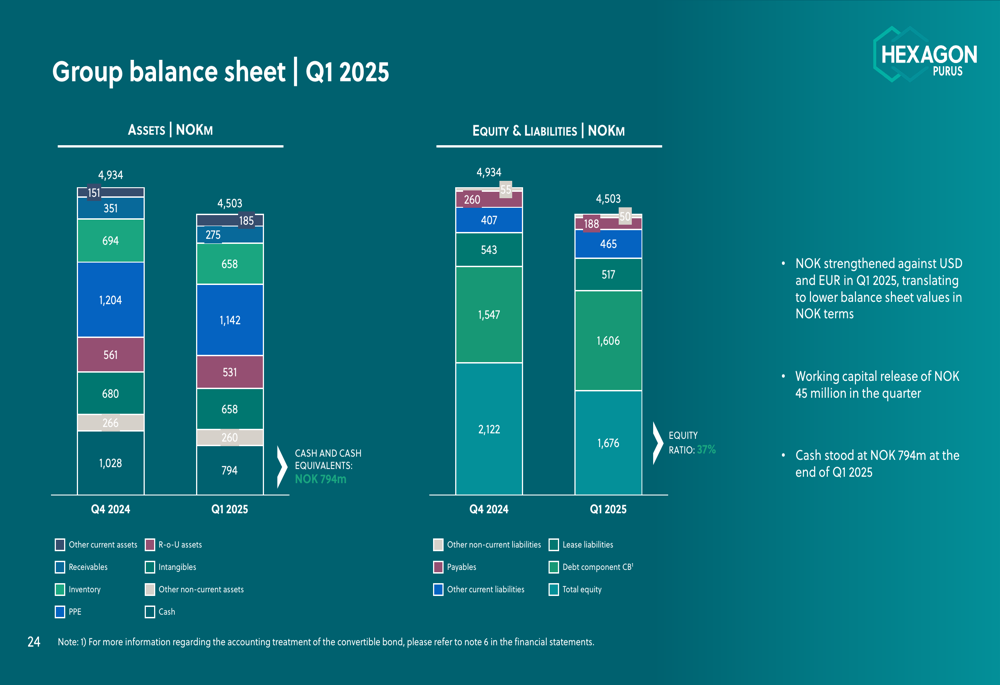
Strategic Initiatives
In response to the challenging market conditions, Hexagon Purus is implementing a comprehensive cost reduction program aimed at lowering its break-even point. The program targets annualized cost savings of approximately NOK 200 million through workforce reduction and decreased SG&A spending.
The company reported that the cost reduction program is progressing according to plan:

On the commercial front, Hexagon Purus announced several significant contract wins during the quarter. The company extended its framework agreement with Solaris, Europe’s leading hydrogen bus manufacturer with over 60% market share, until 2028. Additionally, it received its first order from MCV, a leading bus manufacturer in the Middle East and Africa, valued at approximately EUR 2.4 million with delivery scheduled for 2025.
Hexagon Purus also signed a multi-year agreement with Stadler, a Swiss manufacturer of railway rolling stock, to supply hydrogen fuel storage systems for rail applications in California.
The company continues to make progress on its geographic expansion, preparing for local certification in China with in-house cylinder production planned for 2025 and supply to the Chinese market targeted for 2026.
Forward-Looking Statements
Hexagon Purus’s outlook for 2025 reflects varying degrees of visibility across its business segments. The company expects hydrogen mobility activity to remain strong for the full year 2025, while hydrogen infrastructure revenue is anticipated to be significantly lower compared to 2024. Battery mobility revenue is projected to grow year-over-year for the full year 2025.
The company’s outlook by segment is summarized in the following chart:
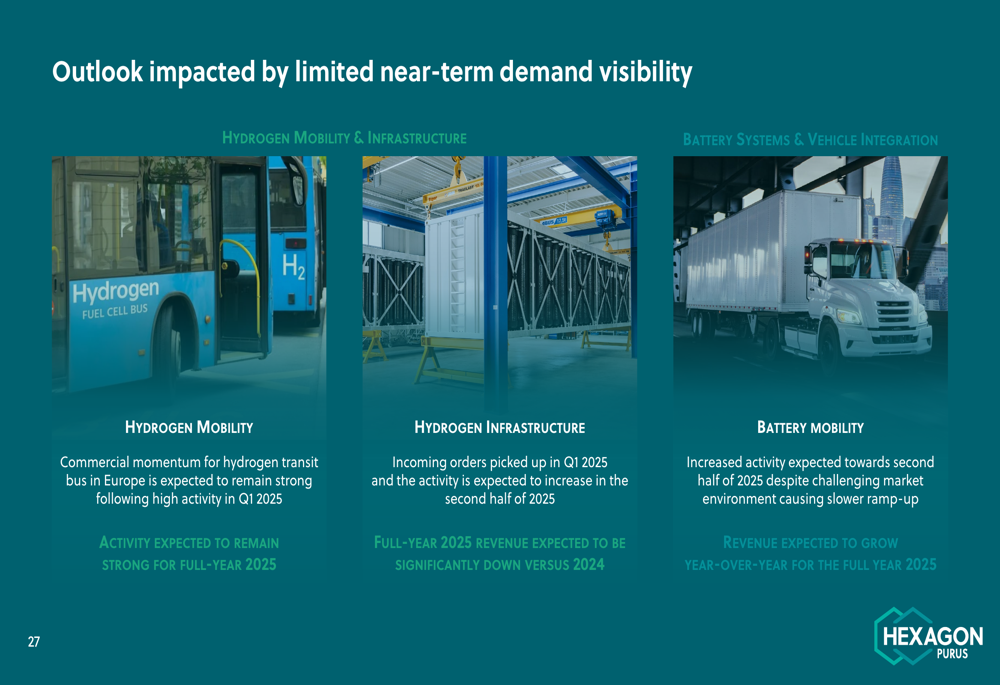
For the remainder of 2025, Hexagon Purus has identified three key focus areas:
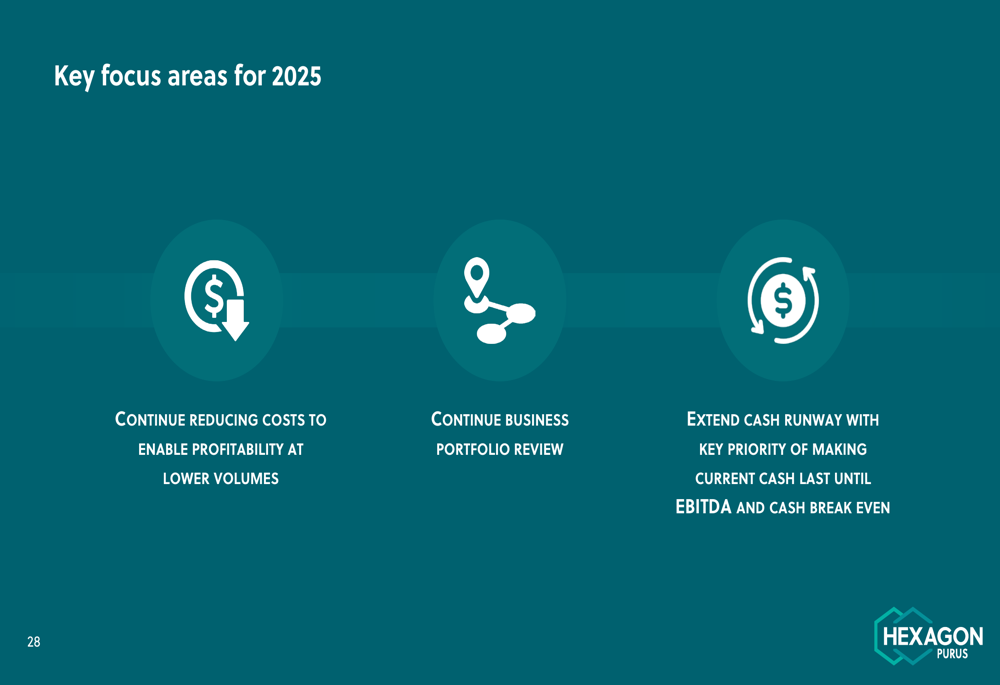
Management emphasized that extending the cash runway is a key priority, with the goal of making current cash reserves last until the company reaches EBITDA and cash flow break-even. The business portfolio review continues as the company evaluates its operations to align with market realities.
While near-term challenges persist, particularly in the hydrogen infrastructure segment, Hexagon Purus remains focused on its long-term strategy of enabling zero emission mobility. The company’s diversified approach across hydrogen and battery electric solutions positions it to capitalize on the ongoing energy transition, despite the current market volatility and reduced near-term demand visibility.
Full presentation:
This article was generated with the support of AI and reviewed by an editor. For more information see our T&C.
